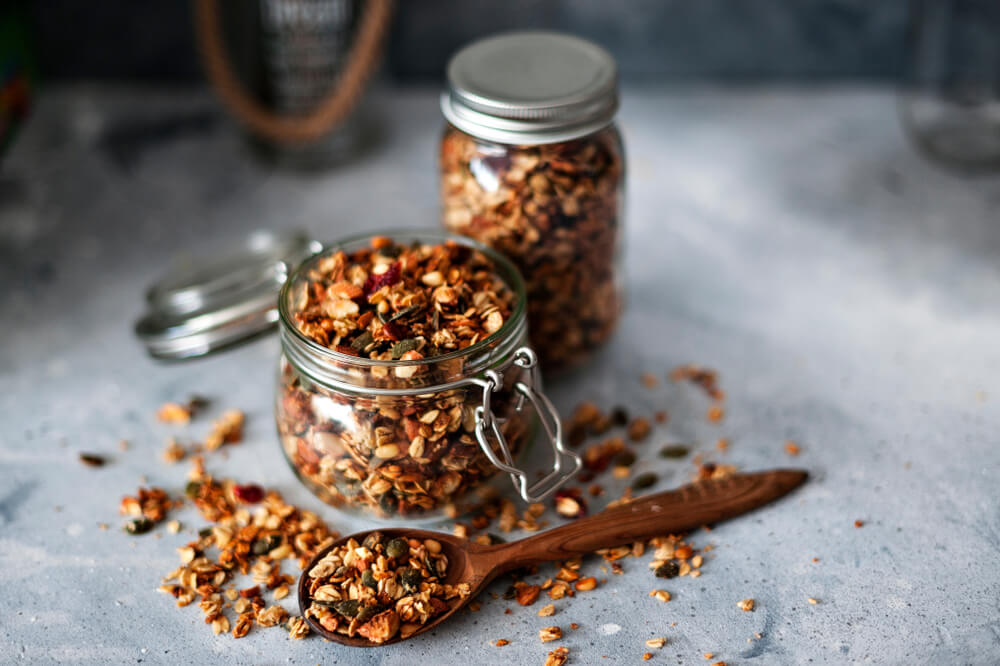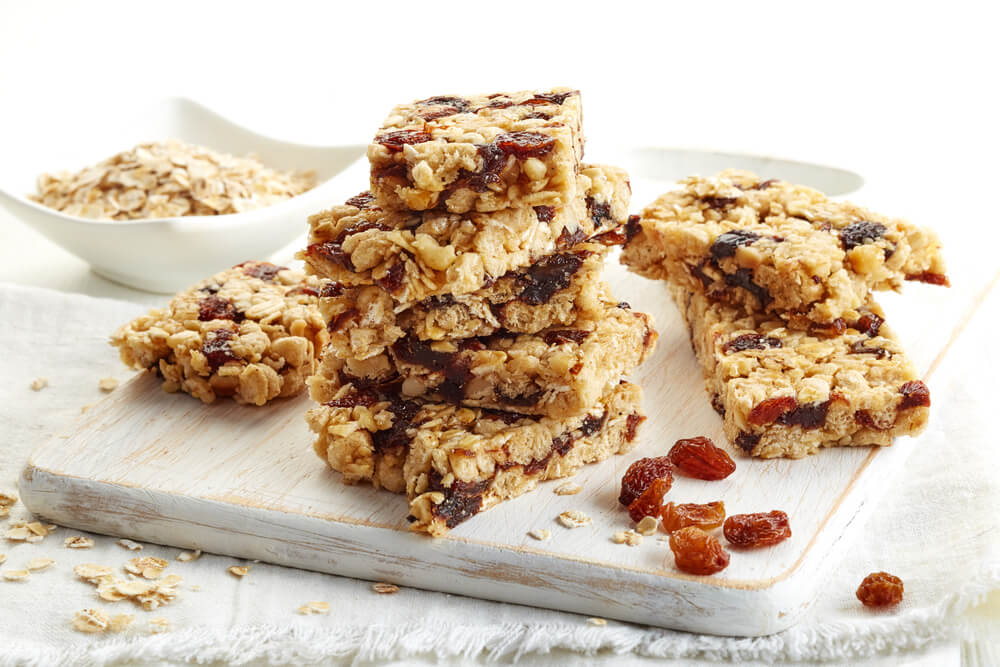Granola is a delicious way to start the morning and a perfect snack or addition to fruit for a great dessert. If you’ve found yourself asking, “Can you freeze granola?” you’re in luck.
The answer is yes; you can freeze granola and keep it fresher longer so that you never have to repeat the disappointing feeling when you see you left the bag open in the pantry or that you’ve gone too long without buying a new bag.
If you want to learn how to freeze your granola the right way so that it stays fresh for months down the road, read below for the exact steps.
How to Store Homemade Granola in the Freezer

1. Gather Materials
First, you’ll need to gather a container that’s large enough to store all of your homemade granola. If you don’t have one big enough, you can choose to store the granola in multiple smaller containers. For best results, use glass jars or other air-tight options.
However, if all you have is plastic containers, that’s fine too.
2. Add Granola to Containers
Next, you’ll want to pack your granola into the containers you plan to freeze it in. Ensure everything has completely cooled first, and then begin scooping the granola mix into their new home. If you plan to use your granola on-the-go, consider using small single-serving containers that you can grab and take with you in the morning.
3. Remove Air Pockets
Once you place the granola into its container, press the oats, seeds, and fruit mix down to remove air gaps that may be lingering. With less air in the container, there’s less of a chance of getting freezer burn. You can press either with your fingers or the back of a spoon. Try to leave 1/4 inch at the top so the granola doesn’t get stuck to the lid.
4. Label
Next, label your containers. It’s a good idea to label the granola contents and the date added to the freezer as well. For example, if you have peanuts in your mix, the last thing you want is someone allergic to peanuts grabbing the container for an easy breakfast. Make it obvious what’s in the granola mix and write the day, so you know how long they’ve been in there.
5. Freeze
Once they’re all labeled, you can go ahead and place them in the freezer. They can last anywhere from three to five months when stored properly.
How Long Does Granola Last?
You’ll notice that pre-made bags of granola come with a best-by date, which is a helpful estimate of how long the product usually stays fresh. They usually give a conservative estimate. Frequently, the granola can last much longer than that.
If you’ve made homemade granola and want to know how long you can keep it fresh, the answer is usually between two weeks and a month.
If you’re planning to freeze your granola, you can make it last much longer – close to 6 months if stored properly!
Storing Granola Bars

If you’re working with store-bought bars, all you have to do is throw them in a freezer bag and toss them in the freezer. Since they come individually wrapped already, they won’t stick together. The extra layer of the freezer bag will add a little more protection.
If you’ve made homemade granola bars, you first need to create individual packaging for each bar, so they don’t stick together and harden as one large mass. The best way to do this is to cut your bars and wrap each one in wax paper. You can then put all of the wrapped bars into one larger freezer bag or cover them completely in aluminum foil for safekeeping.
How to Thaw Frozen Granola or Granola Bars
Frozen granola isn’t the tastiest treat. For best results, you’ll want to thaw out the granola before enjoying it after freezing.
To do this, simply place the granola on a counter and let it sit at room temperature for a few hours. After one or two hours, it should be thawed and ready to go. Since there’s not much liquid in granola, it won’t take too long to thaw, and it won’t get soggy.
Putting it in the refrigerator to defrost is not the best idea. A refrigerator defrosts things much slower, which can help items with a lot of moisture like meat or fruit. A dry good like granola can thaw much quicker on the counter.
How to Tell If Granola Has Gone Bad
Granola is usually safe to eat for months after storing—sometimes even years!
The main concern is the nuts since they have such a high oil content. Their oil content makes them more likely to go rancid. If it’s been a while since you’ve had your granola, take a small taste and make sure to try a nut before adding it to your yogurt or smoothie.
Ways to Use Frozen Granola
Some delicious ways to use frozen granola include:
- On top of yogurt for breakfast.
- Instead of cereal.
- Add to a smoothie for texture.
- Use to make homemade fruit crisp.
- Sprinkle on top of ice cream or frozen yogurt.
One of the best things about granola is how diverse it is for breakfast, a snack, or even dessert!
Enjoy Fresh-Frozen Granola
If you’re a granola lover but can’t commit to eating it every day until you run out, freezing it for later use is something to consider. By freezing the dry oats mix, you’ll be able to add it to your breakfasts or desserts for months to come.
Related Articles:








Thanks for the article! You may wish to edit this line, “Mold is usually safe to eat for months after storing—sometimes even years!” 🙂
Oh my goodness, thanks for the catch here, Meg! I just corrected it, glad you enjoyed it and thanks again 🙂